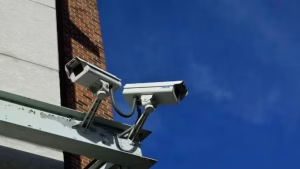GS2 – Education

Context
The CBSE has issued directions for mandatory CCTV surveillance in affiliated schools, aligning with the National Commission for Protection of Child Rights (NCPCR) guidelines to enhance institutional child safety.
Objectives of the Directive
- Ensure student safety
- Enhance accountability of school staff
- Facilitate real-time response in emergencies through audiovisual monitoring
Key Features of the Surveillance Mandate
- CCTV cameras must be installed in classrooms, corridors, entry/exit points, and open areas.
- Systems should allow for real-time audiovisual recording.
- Footage should be retained for a minimum of 15 days.
- Recordings must be accessible to authorities on demand.
About NCPCR
The National Commission for Protection of Child Rights is a statutory body under the CPCR Act, 2005, responsible for upholding and promoting children’s rights.
Concerns Regarding the Mandate
- Privacy Risks: Continuous surveillance could infringe on the privacy of students and teachers.
- Inequality: Resource-poor schools may struggle to implement this due to infrastructure or funding gaps.
- Data Protection Issues: In the absence of child-specific data laws, there is a risk of data misuse.
Government Measures for School Safety
- National School Safety Policy (2016): Enforces disaster preparedness and infrastructure audits.
- POCSO E-Box (NCPCR): Provides a platform for anonymous reporting of child sexual abuse.
- State Initiatives:
- Tamil Nadu & Maharashtra: In-school child protection and monitoring committees.
- Telangana: Safety certification through audits and compliance checks.
Delhi: Over 1.5 lakh CCTV cameras installed with parental access to live feeds.




